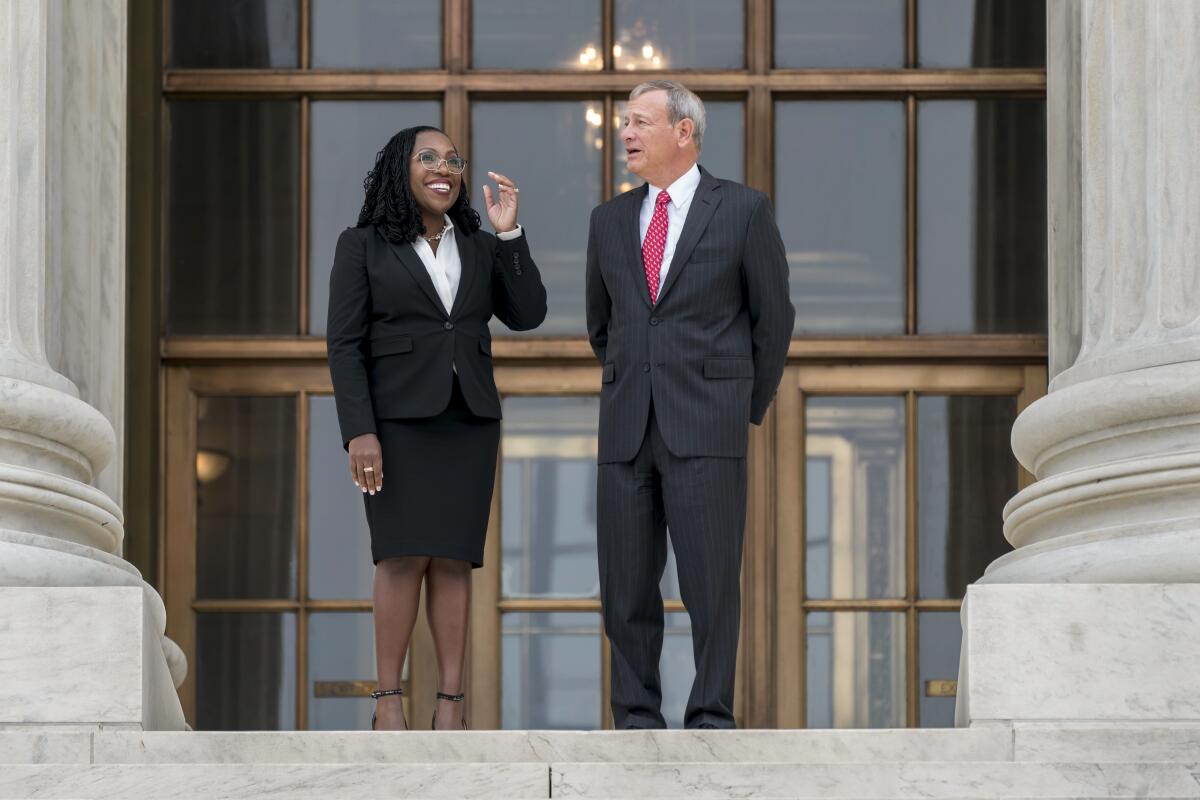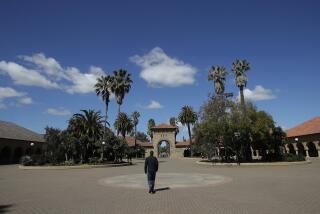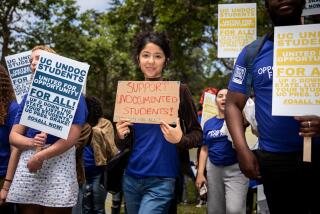Conservative justices may end affirmative action in college admissions — and beyond

WASHINGTON — Following last term’s overturning of Roe vs. Wade and an expansion of gun rights, the Supreme Court’s conservatives are moving now to sharply limit or strike down affirmative action at colleges and universities.
At issue is a fundamental question about the role of race and the meaning of equality under the law.
On Monday, the court will hear challenges to the “race conscious” admissions policies at Harvard, the nation’s oldest private college, and the University of North Carolina at Chapel Hill, the oldest state university.
And the outcome could affect not only higher education, but potentially the workplace as well.
For more than 40 years, the court has ruled that universities have a “compelling interest” in creating a diverse student body, which justifies giving a limited preference to well-qualified applicants who are Black, Latino or Native American.
Civil rights advocates argue this affirmative action takes at most a modest step in the direction of equality and correcting past injustices in a nation with a history of slavery, segregation and racism.
Schools officials say they use race as a tiebreaking factor when choosing among qualified applicants, and doing so allows them to create a more diverse student body, which benefits everyone.
But the court’s conservatives, including Chief Justice John G. Roberts Jr., have argued in recent years that in order to comply with the Constitution and 1960s-era civil rights laws, admissions policies should be “colorblind” and “race neutral.”
They cite the words of Justice John Marshall Harlan, the lone dissenter from the infamous 1896 decision in Plessy vs. Ferguson that upheld segregation.
“Our Constitution is color-blind, and neither knows nor tolerates classes among citizens,” Harlan wrote. “In respect of civil rights, all citizens are equal before the law.”
Conservatives also cite the Brown vs. Board of Education decision that relied on Harlan’s reasoning in overturning segregation in 1954. They argue the time has come for government-funded universities to stop using applicants’ race as a factor in admissions in any way, even if the goal is to help underrepresented groups.
“The way to stop discrimination on the basis of race is to stop discriminating on the basis of race,” Roberts wrote in a 2007 decision that ended a high school diversity policy in Seattle.
The debate over affirmative action comes as the high court has, for the first time, two Black justices. They have already staked out contrary views.
Justice Clarence Thomas has been a vehement critic of affirmative action.
“The Constitution abhors classifications based on race because every time the government places citizens on racial registers and makes race relevant to the provision of burdens or benefits, it demeans us all,” he wrote in dissent in a University of Texas case.
He derided the “faddish theory that racial discrimination may produce educational benefits.”
Justice Ketanji Brown Jackson in her second day on the court took issue with the view that the Constitution demands “race-neutral” laws. She said the post-Civil War Reconstruction Congress adopted the 14th and 15th Amendments to authorize civil rights laws that operate “in a race-conscious way.”
The aim of those amendments, Jackson said, was “to ensure the people who had been discriminated against — the freedmen during Reconstruction — were brought equal to everyone else in society ... to be made equal to white citizens.” That “is not a race-neutral or race-blind idea,” she said.
Jackson will likely play an active role during Monday’s oral arguments, at least during the first hour. She recused herself from the Harvard case because she had served on the university’s board of overseers, but she will participate in deciding the UNC case.
Civil rights leaders said they fear the court could close the door of opportunity to the next generation of students of color.
Maya Wiley, president of the Leadership Conference on Civil Rights, said the court cases “go directly to what it means to be a multiracial democracy.” She said most Americans believe that diverse college experiences are better.
“It’s important we don’t allow the clock to be turned back,” said Damon T. Hewitt, president of the Lawyers’ Committee for Civil Rights Under Law. The lives of Black students “are defined by race. Their world is not race neutral,” he added.
The two universities were sued by Students For Fair Admissions, a group created by retired stockbroker Edward Blum. He has brought a series of lawsuits to challenge the use of race in drawing election districts and in university admissions.
The group says its mission is “to restore the original principles of our nation’s civil rights movement: A student’s race and ethnicity should not be factors that either harm or help that student to gain admission to a competitive university.”
SFFA says it has 20,000 members, including several who said they were turned down for admission at the two universities. Judges said the group had standing to sue because its members had a stake in the outcome.
A ruling against the universities and their use of race would not prevent them from giving a preference to students who had faced hardships, including coming from a low-income family or neighborhood.
The two sides were divided over whether focusing on “socioeconomic” status could create diversity on campus without relying on race.
The suit against Harvard said it should devote more time and money to recruiting and admitting talented students from low-income families, including Black and Latino people, and give less preference to children of Harvard alumni and donors, who tend to be white and affluent.
Harvard and UNC rejected that idea as impractical. Both schools said they encourage Black and Latino students to apply and offer generous financial aid, but they said their data show that more preferences based “socioeconomic” status would lead to decline in the number of Black students as well as a drop in average test scores.
Lawyers for both schools told the court they had “no workable race-neutral alternatives” to achieving diversity on campus without considering race as a factor in admissions.
Harvard stressed that it chooses an entering class of 1,600 a year from 35,000 highly qualified applicants.
In their suit, challengers alleged that Harvard systematically discriminated against Asian Americans, who tend to score high on academic measures but low on the school’s “personal rating,” which considers factors such as “leadership, integrity, self-confidence and likeability.”
“Year after year, Harvard’s personal ratings reflect a clear racial hierarchy,” they told the court, “where African Americans receive the best personal ratings, followed by Hispanics, followed by whites, with Asian Americans in last place.” They compared Harvard’s current use of these “subjective” factors to its use of “character” and “fitness” measures to limit the number of Jewish students a century ago.
In response, Harvard said these personal ratings are a “minor” factor and denied it discriminates based on race, though Asian American applicants with top grades and high test scores are far less likely to be admitted than Black, Latino and white students with the same or lesser academic qualifications.
The Boston-based judges who upheld Harvard’s admissions policy noted that the percentage of Asian American students has risen steadily from 3.4% in 1980 to 20.6% in 2019. They warned that “eliminating race as a factor in admissions would reduce African American representation from 14% to 6% and Hispanic representation from 14% to 9%.”
UNC has a similar admissions policy that seeks to overcome a history of racial exclusion. It did not admit its first Black students until 1955, a year after the Supreme Court struck down state-enforced segregation. And even with its affirmative action policy, Black students remain underrepresented at Chapel Hill.
About 8% of UNC students are Black in a state with a 21% Black population.
Opinion polls show that most Americans support racial diversity at colleges, but oppose the use of race as an admissions factor. In a Pew poll on colleges released in April, most Americans said admissions should turn on a student’s high school grades and test scores, while 74% said “race or ethnicity” should not be a factor.
Respondents differed, however, based on their own race and ethnicity, with 79% of whites, 68% of Latinos, 63% of Asians and 59% of Blacks saying they opposed using race or ethnicity in admissions.
In 1996, California’s voters adopted a ballot measure that bars the University of California and other public schools from discriminating against or granting preferential treatment on the basis of race, sex, color, ethnicity or national origin.
Since then, eight states have adopted similar policies, including Michigan, Washington, Florida and Arizona.
A ruling against Harvard could extend such a ban to private universities that receive federal funds, including Stanford and USC.
This aspect of the cases could prove significant far beyond higher education. In the late 1970s, the court’s liberal majority ruled that the Civil Rights Act of 1964 did not prevent universities or employers from using affirmative action that gave a preference to underrepresented racial groups. In both instances, the court said the aim of that landmark law was to overcome past discrimination.
However, the actual words of the law forbid discrimination on the “basis of race.” If the conservative court were to rule that the civil rights law forbids universities from using race in admissions, legal experts predict it would open the door to new legal challenges to affirmative action in the workplace.
A decision on the cases is expected early next year.
More to Read
Get the L.A. Times Politics newsletter
Deeply reported insights into legislation, politics and policy from Sacramento, Washington and beyond. In your inbox three times per week.
You may occasionally receive promotional content from the Los Angeles Times.











